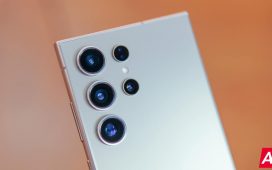Expert’s Rating
Pros
- Loads of new AI features
- Fast wired and wireless charging
- Great battery life
- Solid camera system with Harcourt Portrait effects
Cons
- Plastic frame
- Ultrawide camera is pretty weak
- MagicOS software isn’t for everyone
Our Verdict
The Honor 400 Pro can do it all, and it does it at a reasonable price. With a speedy chip inside, serious camera hardware, flagship-level AI features, a long-lasting battery and quick charging, it leaves little to be desired. That said, a plastic frame, divisive software and fairly weak ultrawide camera could be deal breakers for some.
Price When Reviewed
This value will show the geolocated pricing text for product undefined
Best Pricing Today
Last year’s Honor 200 Pro cemented itself as a more affordable mid-range (just about) alternative to the usual flagship flock. It offered a very flagship-like experience, but with a more approachable £699 .99price, and very few compromises.
With the Honor 400 Pro, the brand is looking to further improve on that offering. It comes in at the same price, but it has a faster chip inside, a higher IP rating, more megapixels, a slightly larger battery, and of course, plenty of AI features.
So far, so good, but the only way to really know what it’s like is to put it to the test. After using it as my main phone for the past week, here’s what I’ve learned about the Honor 400 Pro.
Design & Build
- Plastic frame, curved glass back
- 205g
- IP68 / IP69 rated
The Honor 400 Pro has a quad-curved design on its front and rear, with gently curved side rails joining the two. It’s a similar shape to the Magic 7 Pro and Oppo Find X8 Pro, which gives it a flagship-like vibe, despite remaining relatively affordable.
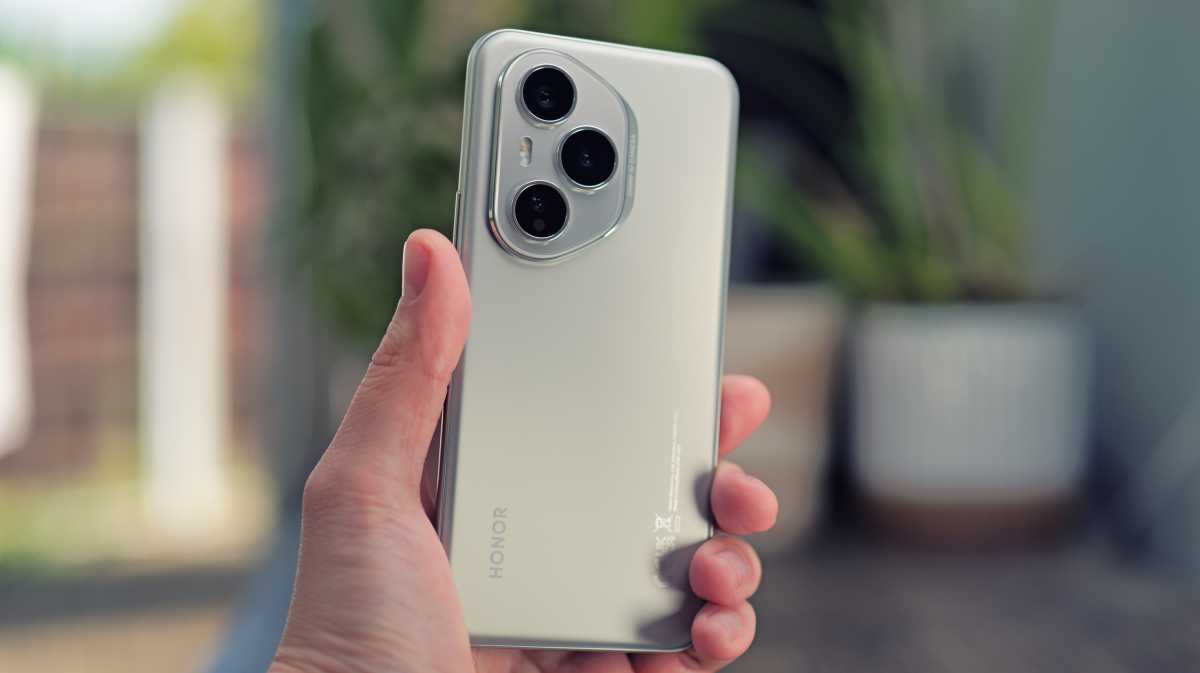
Luke Baker
The most obvious giveaway that we’re dealing with a mid-ranger is the plastic frame. In all honesty, I don’t have any concerns about durability, the phone feels rock solid – but without the cool feeling of an aluminium frame, you can tell that this one’s on the more affordable side.
I don’t have any concerns about durability, the phone feels rock solid – but without the cool feeling of an aluminium frame, you can tell that this one’s on the more affordable side
On the plus side, it allows the phone to be fairly lightweight. At 205g, it’s lighter than most 6.7-inch handsets, and that feels great in your pocket. It also doesn’t affect the sealing, as the Honor 400 Pro has been awarded the highest IP68/69 rating for dust and water resistance.
There’s a new camera layout for this year, which sees the lenses positioned in a triangular formation. It reminds me of a cross between the iPhone camera and the Huawei Pura 70-series. I wasn’t very fond of last year’s oval design, so I’d call this a bit of a glow-up.
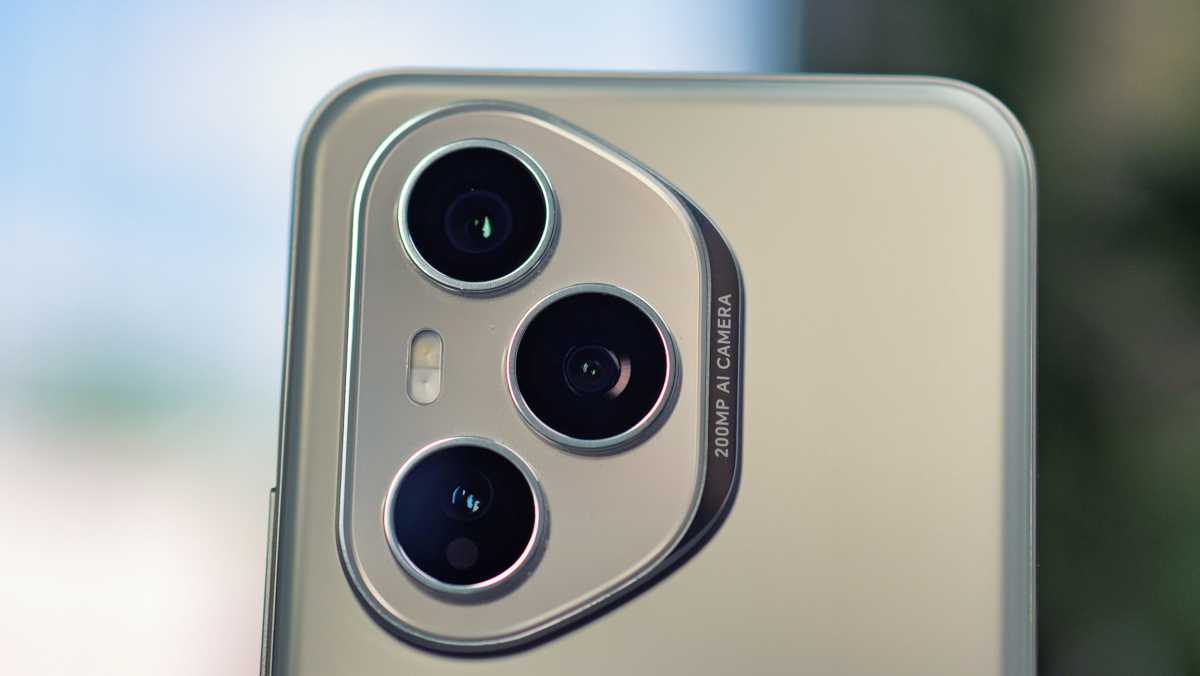
Luke Baker
I have the Lunar Grey version in for testing, which has a silky-feeling matte glass back. It’s completely immune to fingerprint smudges, and it’s deceptively grippy, which is great news, as there’s no case included in the box. It’s also available in Midnight Black, which features black rear and side rails for a stealthy, professional look.
Screen & Speakers
- 6.7-inch, 2800 x 1280, OLED, 120Hz
- 5000 nits peak brightness
- Stereo speakers
The Honor 400 Pro has a sizable 6.7-inch OLED panel with an adaptive 120Hz refresh rate. Peak brightness is supposedly 1000 nits higher than last year’s model, which makes it very easy to see when you’re out in the sunshine, and it also looks great when you’re watching HDR content.

Luke Baker
Arguably, the most impactful change with this model is the shape of the glass. The Honor 200 Pro had a traditional curved design, with sweeping curves on the left and right sides of the display, whereas the 400 Pro has a quad micro curve design.
Most of the display is flat, and the curves have a sharper radius that begins at the bezel
I struggle to get along with curved displays, as I often end up swiping the edge of the display accidentally, but these new micro curve designs solve the problem entirely. Most of the display is flat, and the curves have a sharper radius that begins at the bezel. It means that gesture controls still feel super smooth, but accidental touches are completely eliminated.
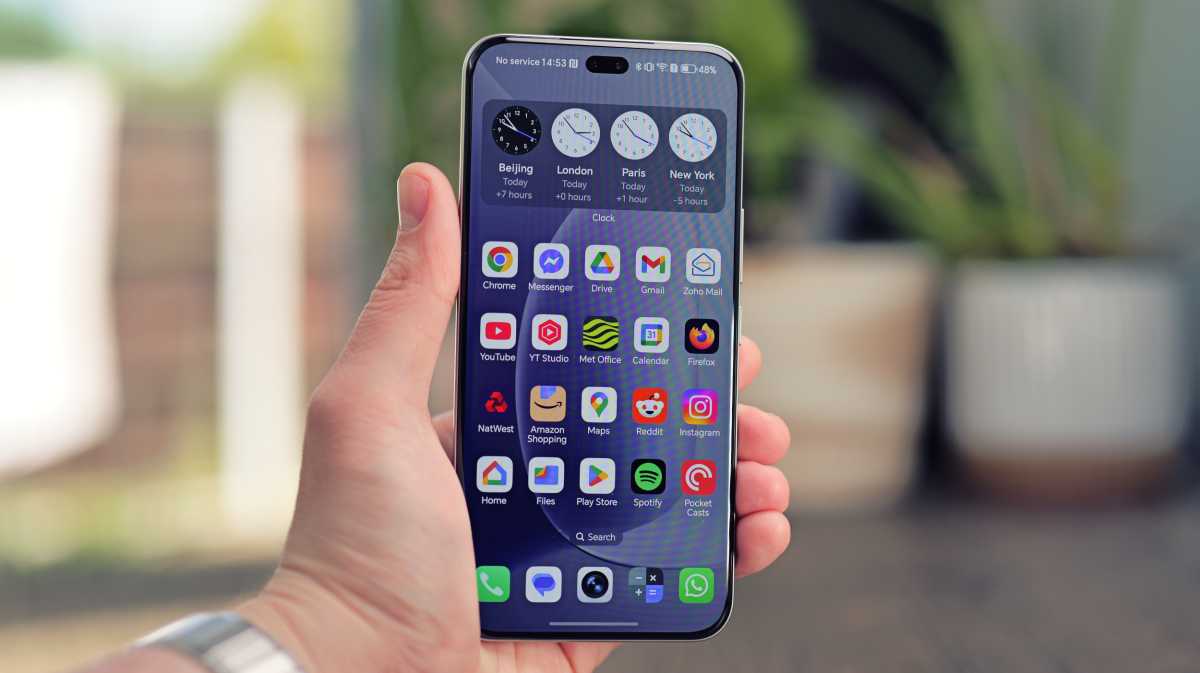
Luke Baker
All in all, I really have no complaints about the display. It’s bright and vivid with colours that appear accurate, along with the exceptional contrast that only OLED panels can provide.
I tested the standard Honor 400 before moving on to the Pro, and while the speakers sounded good, they weren’t particularly loud. I assumed I was in for more of the same with the Pro, but they’re way more powerful. There’s not as much bass response as the speakers on the brand’s flagship Magic 7 Pro, but they sound very decent.
Specs & Performance
- Qualcomm Snapdragon 8 Gen 3
- 12GB RAM
- 256GB / 512GB storage
The Honour 400 Pro runs on Qualcomm’s last-gen flagship SoC, the Snapdragon 8 Gen 3. It’s a practice that we’re seeing more mid-rangers adopt this year, perhaps because there doesn’t seem to be an 8s Gen 3 equivalent for the 8 Elite at the time of writing.

Luke Baker
I’m all for it. The 8 Gen 3 is still a supremely powerful chipset, and not long ago, it was the best that money could buy. Making it available in more affordable handsets creates a better value proposition compared to last-gen flagship refurbs.
This chip is paired with 12GB of RAM and either 256GB or 512GB of storage. More than enough for most people’s needs.
As you might expect, with this much horsepower under the hood, the Honor 400 Pro feels lightning quick. Apps open instantly, swiping around the OS is smooth as can be, and multitasking poses no threat.
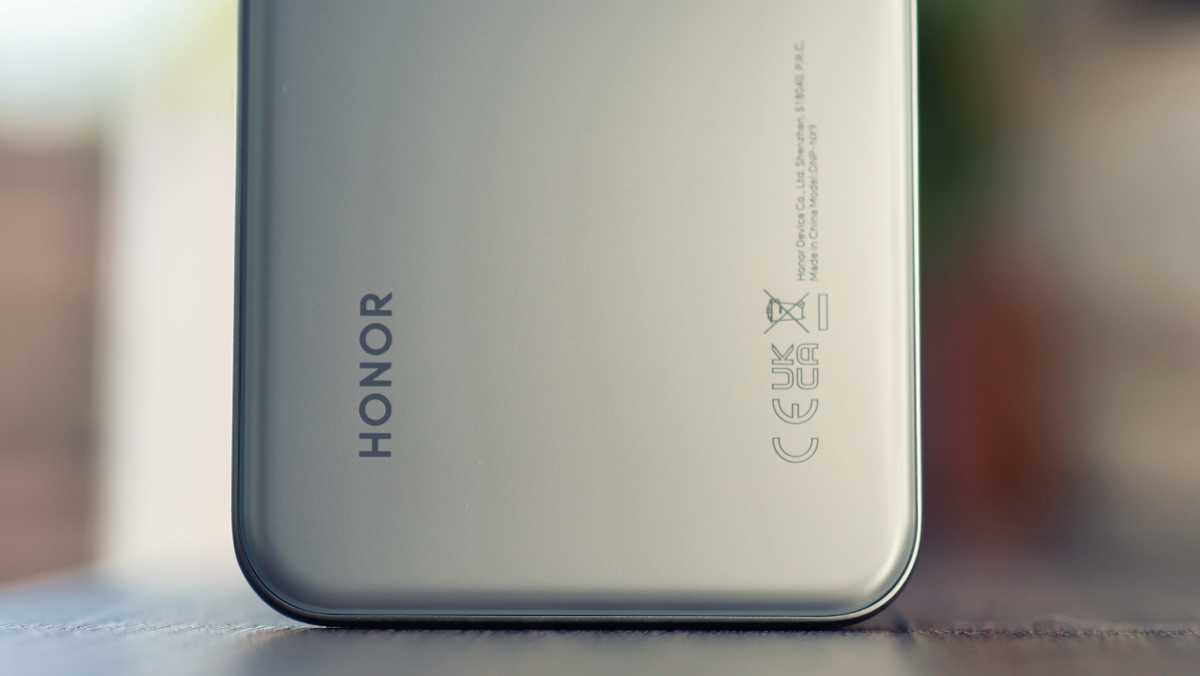
Luke Baker
Of course, this performance extends to gaming, too. The Honor 400 Pro will happily play any title you can throw at it on high graphics settings with relative ease.
I enjoyed a few hours of Genshin Impact on high settings at 60fps, and I never noticed any stutters or slowdowns. The phone does get pretty toasty during long sessions, but if you have a case on it, I’m sure it’ll be much less noticeable.
Honor 400 Pro benchmarks
Cameras
- 200 Mp f/1.9 main camera
- 50 Mp f/2 3x telephoto
- 12 Mp, f/2.2 ultrawide
- 50 Mp, f/2.1 selfie camera
The Honor 400 has a similar camera setup to its non-Pro sibling, but it adds a separate 3x telephoto to the equation. So, you should get nicer shots when you zoom in.
Otherwise, you get the same incredibly high-resolution 200Mp 1/1.4-inch main sensor and 12Mp f/2.2 ultrawide. The main sensor is a healthy upgrade compared to last year’s model, but the ultrawide and telephoto seem to use the same sensors as the 200 Pro. The only difference is that the telephoto is a little more zoomed in, at 3x, rather than 2.5x.
While the 200Mp main sensor shared by both 400-series devices can produce decent digitally cropped shots, the dedicated telephoto still provides a clear advantage. Shots at the native 3x FOV are noticeably sharper and more detailed, and when you push the zoom further, that still remains true.
It’s just as noticeable at night. Zoomed-in shots from the standard Honor 400 lack detail and become noisy, while the Honor 400 Pro’s dedicated telephoto allows for much cleaner low-light snaps.
it can zoom all the way to 50x, while the standard 400 maxes out at 30x.
It gets a little more complicated at 15x zoom and above, where you can choose to use AI to upscale the image, just like the brand’s flagship Magic 7 Pro. The AI processing does a lot of heavy lifting here, and the results become much more comparable. However, there’s still an advantage to the Pro, as it can zoom all the way to 50x, while the standard 400 maxes out at 30x.


I have been very pleased with the shots from the Honor 400 Pro. The image processing can be a little hit and miss (as I’ve found with most Honor phones), but when it hits, it’s capable of absolutely stunning results.
The weak point of the system is macro photography. It uses the ultrawide for macro shots, which is the least impressive lens of the trio, and it means you have to get the lens extremely close to the subject, usually resulting in shadows.
Whether you’re shooting people or pets, you can expect exceptional results
The phone offers the same excellent Studio Harcourt portrait effects that debuted with the 200-series last year. On this model, they’re just as stunning as ever, and whether you’re shooting people or pets, you can expect exceptional results.
The selfie camera is unchanged from last year, and that’s a shame, because it’s a little underwhelming. Don’t get me wrong, you can take some great selfies with it, but when a phone is so good at shooting portraits with the rear lenses, surely it’d make sense to beef up the selfie snapper, too.
For video capture, the Honor 400 Pro can shoot at up to 4K 60 fps on the main and telephoto cameras, while the ultrawide and selfie cameras max out at 4K 30 fps. It’s another area with a clear leg-up over the standard 400, which maxes out at 4K 30 fps on all the rear lenses.
Battery Life & Charging
- 5300 mAh battery
- 100W wired charging
- 50W wireless charging
The Honour 400 Pro has a 5300mAh silicon-carbon battery inside. It’s larger than your average phone, but in 2025, we’re starting to see plenty of Chinese manufacturers pushing to the 6000mAh mark and beyond, so it’s nothing too remarkable.
Still, in use, this capacity proved to be more than enough for me. I could easily make it over a day and a half on a charge, and two is possible if you use your phone a little more conservatively.
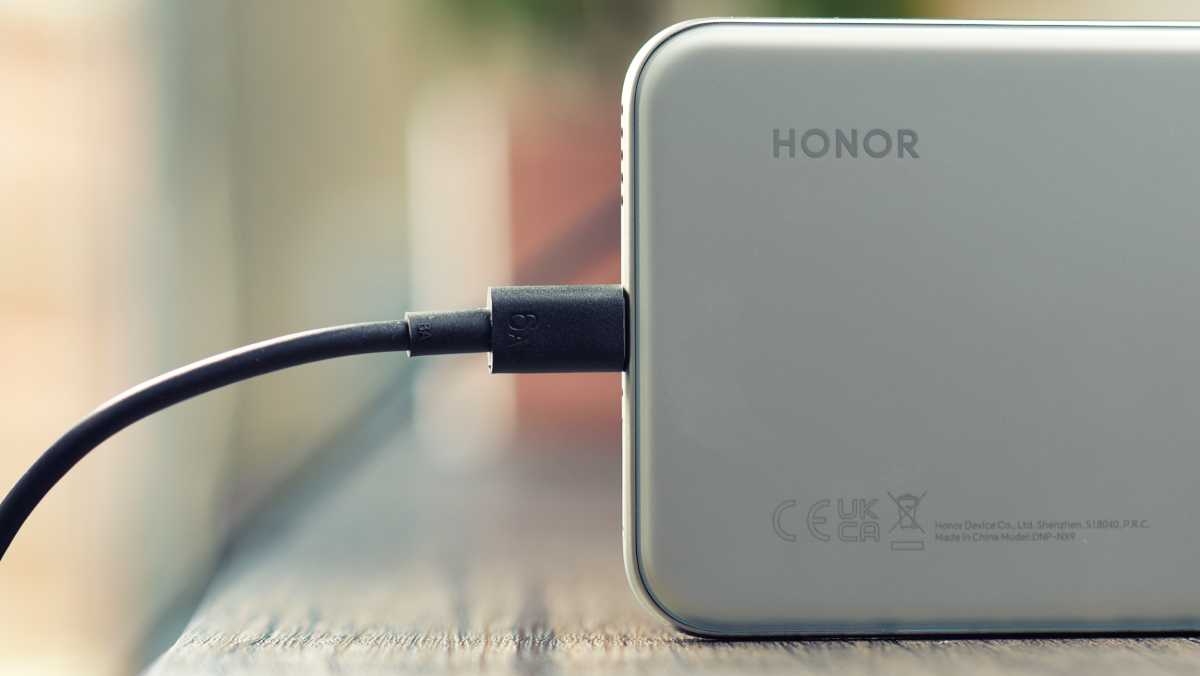
Luke Baker
Charging is blazing fast, too. It supports up to 100W speeds with a wire and 50W using Honor’s official wireless charging stand.
There’s no charger included, just a cable, but with the appropriate wall adapter, you can take the phone from fully dead to 85% charged in just half an hour. Wireless charging is shockingly quick, too, but Honor’s Wireless SuperCharger is a pricey add-on, and you’ll need that to reach the max speed.
Software & Apps
- MagicOS 9, based on Android 15
- New Google Image to Video feature
- Lots of AI functionality
The Honor 400 Pro runs MagicOS 9, Honor’s heavily customised version of Android 15. If you’ve used another recent Honor device, you’ll know what to expect. But if not, it’s quite iOS-inspired, and for that reason, it’s a little divisive.
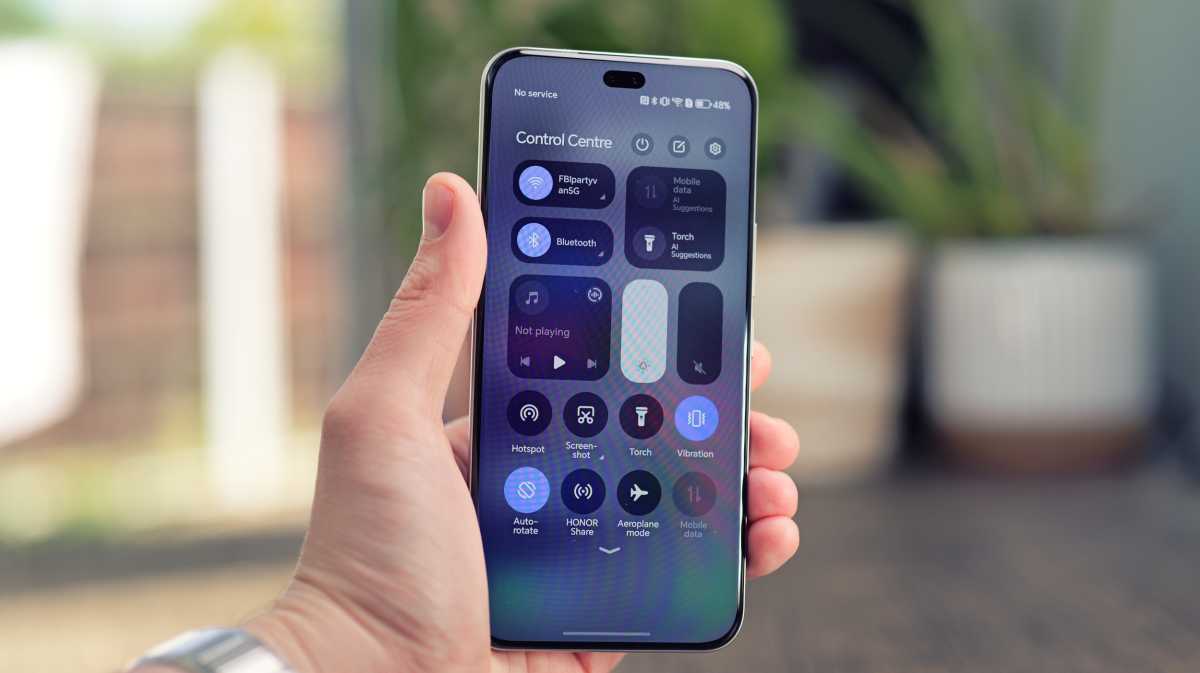
Luke Baker
Personally, I quite like MagicOS. The layout and styling can take some getting used to, but when you’re more familiar with it, there are tonnes of useful features packed in. It also feels quick and snappy, and it seems to make the most out of your battery.
The biggest change with this version is the addition of numerous AI-powered features: some designed by Honor itself, and some in collaboration with Google.
The Honor 400 series phones are the first models to debut Google’s new Image to Video tool. Essentially, it means you can pick any image in your gallery, tap a button, and AI will magically transform it into a 5-second video.
The results are astonishingly realistic, but you only get a single button to activate the feature; there’s no way to prompt the AI, so the results are rather unpredictable. As it stands, it’s basically a party trick, albeit a very impressive one.
Honor’s other AI features are more practical. There are all the usual things, like translation and summarisation features, and a couple that you may not have seen before, like AI deepfake detection for video calls and AI-generated subtitles that work across all apps.
It’s the image editing tools that I found myself using the most, though. Editing images from the Gallery app now includes options to cut out and move subjects, and AI will fill in the background. You can also open people’s eyes if they blink during a group shot, remove reflections, enhance low-quality shots, and expand an image’s field of view. It’s very comprehensive.
Another big win is that Honor now promises 6 years of major OS upgrades and 6 years of security patches. Last year’s Honor 200 Pro only got 3 major updates and 4 years of security patches. So, while it doesn’t quite match the flagship 7+7 policy, it’s a big step in the right direction.
Price & Availability
The Honor 400 Pro is available to order now in the UK from Honor’s website, Amazon and various other authorised retailers. It’s available in most regions globally, but as usual, this model won’t be launching in the US.
In the UK, it starts at £699.99 for the base model with 12GB of RAM and 256GB of storage, in the EU, the same model starts at €799. Honor has also confirmed that the 400 Pro will be available on contract via EE, O2, Three, Vodafone and Tesco Mobile.
The outright price means it’s in direct competition with devices like the iPhone 16e and Samsung Galaxy S24 FE. The Pixel 9 can also be found at a similar price, though there are plenty of other alternative mid-range phones that are worth considering.
Should you buy the Honor 400 Pro?
The Honor 400 Pro is a solid upper mid-range handset that doesn’t fall short in any particular area. No matter your priorities, the 400 Pro has something to offer.
The cameras are great (although the ultrawide could use an upgrade), and the Harcourt portrait effects are as impressive as ever. The screen is lovely, the battery lasts a long time, and there’s plenty of power for hardcore gamers.
There are also lots of AI features to play with, everything’s included from productivity-focused tools to image editing and beyond.
As for downsides, the plastic frame detracts from the otherwise premium feel, and Magic OS strays very far from the stock Android experience, so it won’t be to everyone’s tastes.
Otherwise, this phone trades blows with its similarly priced competitors, and often comes out on top.
Specs
- MagicOS 9, based on Android 15
- 6.7-inch, 2800 x 1280, OLED, 120Hz
- In-display fingerprint sensor
- Qualcomm Snapdragon 8 Gen 3
- 12GB RAM
- 256GB / 512GB storage
- Cameras:
- 200Mp main sensor
- 12Mp ultrawide
- 50Mp 3x telephoto
- 50Mp selfie camera
- Up to 4K @ 60fps rear video
- Stereo speakers
- Dual-SIM
- Wi-Fi 802.11 a/b/g/n/ac/ax
- Bluetooth 5.2
- 5110mAh battery
- 66W wired charging
- 50W wireless charging
- 160.8 x 76.1 x 8.1 mm
- IP68 / IP69 certified
- 205g
- Colours: Midnight Black / Lunar Grey





